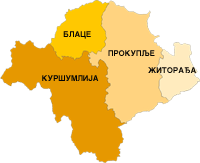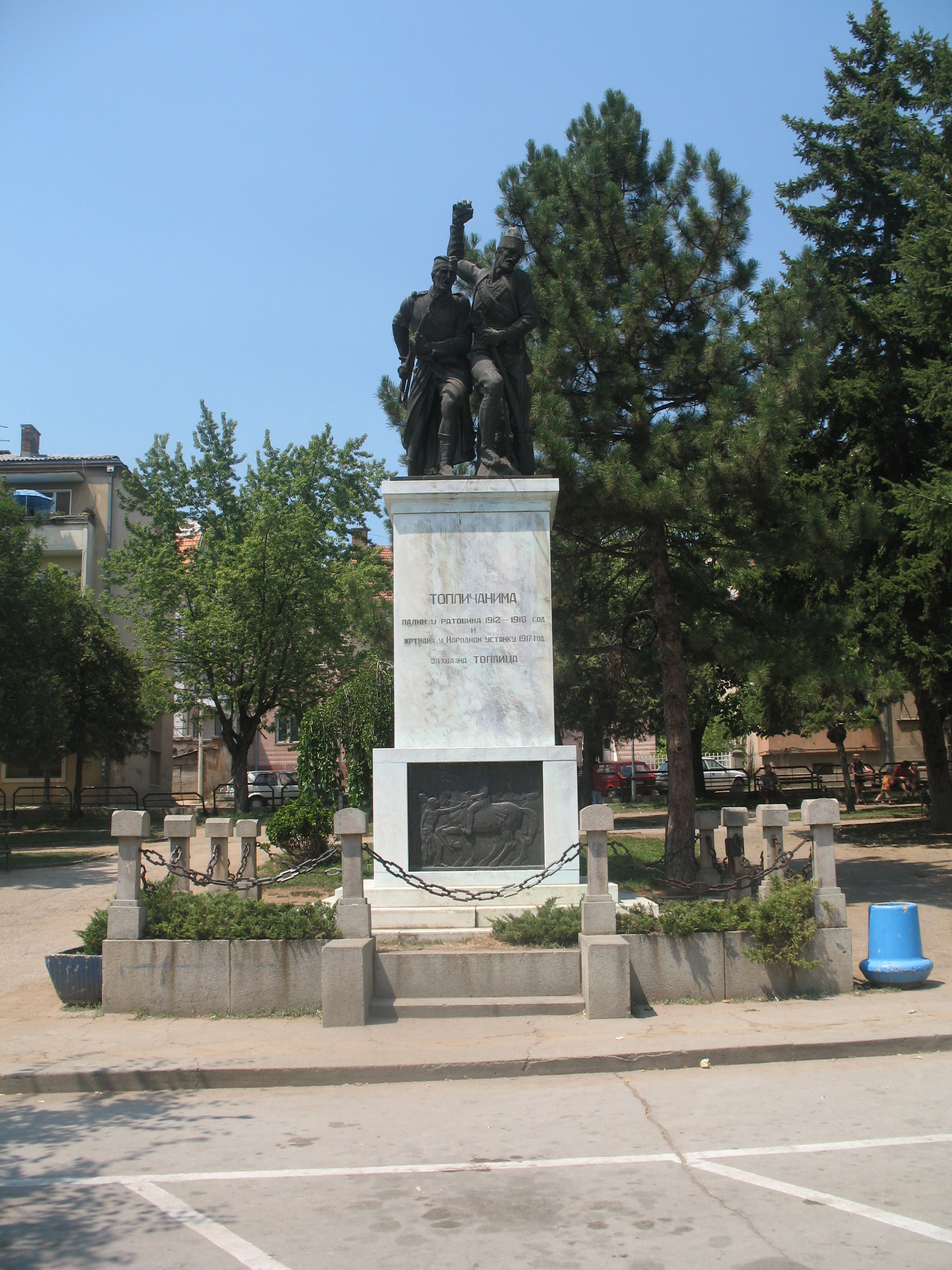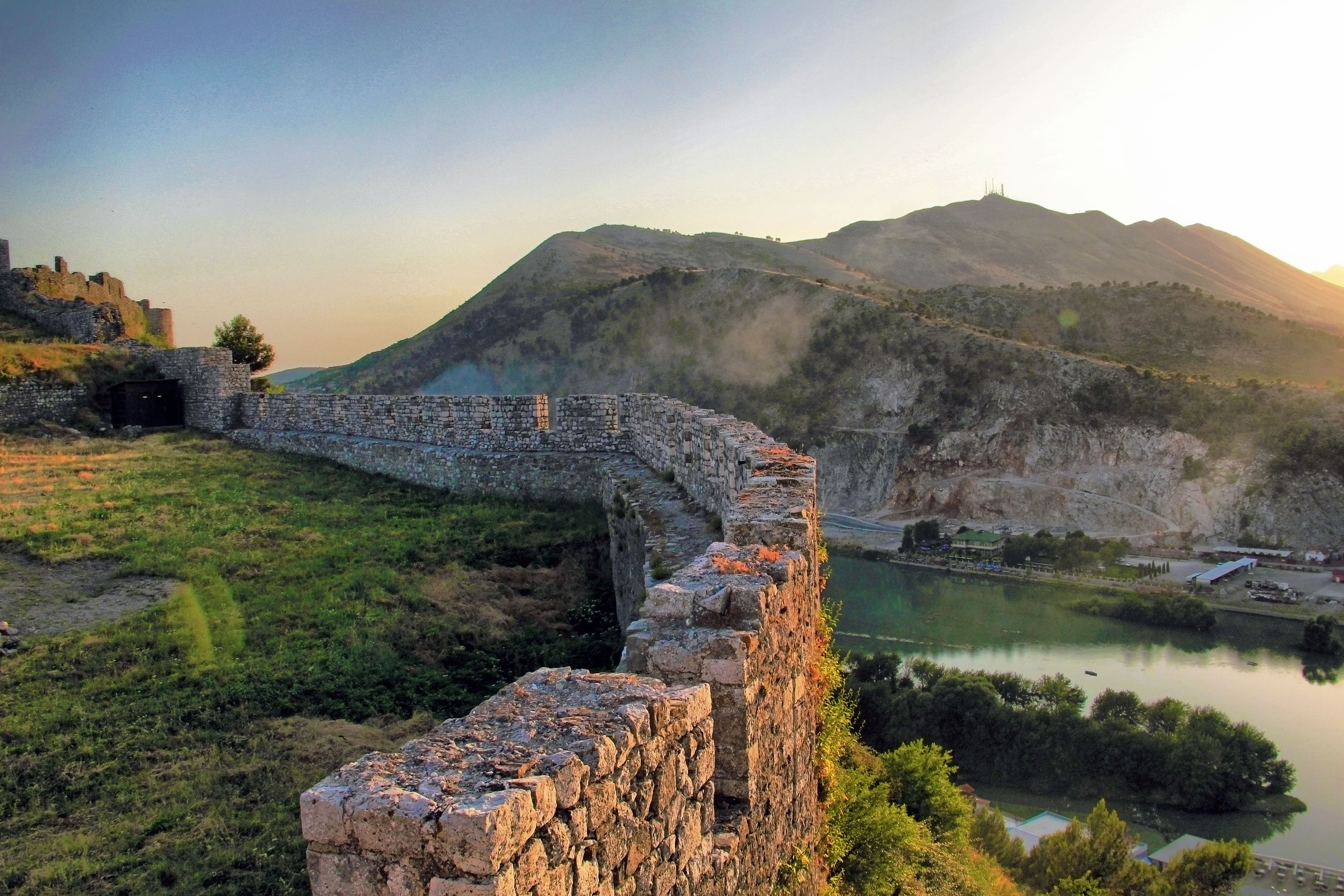|
Stanoje Glavaš
Stanoje Stamatović ( sr-cyr, Станоје Стаматовић), known as Stanoje Glavaš (Станоје Главаш; 21 February 1763 – 15 February 1815) was a Serbian hajduk and hero in the First Serbian Uprising. Life Glavaš was born in 1763 in the village of Glibovac, near Smederevska Palanka, at the time part of the Sanjak of Smederevo, Ottoman Empire. In his youth, he was a gentleman's tailor in Smederevska Palanka. He never married, which was unusual for small town business owners of the time in Serbia. For a time, he shared a house with a certain other confirmed bachelor, originally from Negotin, one Borisav Petrović, and they had a joint enterprise for constructing adobe houses. During this time Karađorđe Petrović spent several months in Glavaš's house, either as an apprentice or as a hajduk in hiding during wintertime. Later, Glavaš was the co-leader, with :sr:Станко Арамбашић, Stanko Arambašić and :sr:Лазар Добрић, Lazar Dobrić ... [...More Info...] [...Related Items...] OR: [Wikipedia] [Google] [Baidu] |
Đura Jakšić
Georgije "Đura" Jakšić (; 27 July 1832 – 16 November 1878) was a Serbian poet, painter, writer, dramatist and Bohemianism, bohemian. Biography Đura Jakšić was born as Georgije Jakšić in Srpska Crnja, Austrian Empire (present-day Serbia). His father was a Serbian Orthodox priest. Georgije's early education took place in Timișoara and Szeged. He lived for a time in Zrenjanin, where he began studying painting under Konstantin Danil. He later studied fine arts in Vienna and Munich but the Revolutions of 1848 in the Austrian Empire, revolution of 1848 interrupted his education, which he never finished. He took active part in the 1848 Revolution and was wounded while fighting in Srbobran. After the revolution he moved to Belgrade, Principality of Serbia, where he served as a schoolteacher, a lector in a state-owned printing office, and in various other jobs, although he was often unemployed. As a political Liberalism, liberal, he was persecuted by authorities. Jakšić died ... [...More Info...] [...Related Items...] OR: [Wikipedia] [Google] [Baidu] |
Austrian Empire
The Austrian Empire, officially known as the Empire of Austria, was a Multinational state, multinational European Great Powers, great power from 1804 to 1867, created by proclamation out of the Habsburg monarchy, realms of the Habsburgs. During its existence, it was the third most populous monarchy in Europe after the Russian Empire and the United Kingdom of Great Britain and Ireland, United Kingdom, while geographically, it was the third-largest empire in Europe after the Russian Empire and the First French Empire. The empire was proclaimed by Francis II, Holy Roman Emperor, Francis II in 1804 in response to Napoleon's declaration of the First French Empire, unifying all Habsburg monarchy, Habsburg possessions under one central government. It remained part of the Holy Roman Empire until the latter's dissolution in 1806. It continued fighting against Napoleon throughout the Napoleonic Wars, except for a period between 1809 and 1813, when Austria was first allied with Napoleon ... [...More Info...] [...Related Items...] OR: [Wikipedia] [Google] [Baidu] |
Niš
Niš (; sr-Cyrl, Ниш, ; names of European cities in different languages (M–P)#N, names in other languages), less often spelled in English as Nish, is the list of cities in Serbia, third largest city in Serbia and the administrative center of the Nišava District. It is located in the Southern Serbia (Geographical Region), southern part of Serbia. , the city proper has a population of 178,976, while its administrative area (City of Niš) has a population of 249,501 inhabitants. Several Roman emperors were born in Niš or used it as a residence: Constantine the Great, the first Christian emperor and the founder of Constantinople, Constantius III, Constans, Vetranio, Julian (emperor), Julian, Valentinian I, Valens; and Justin I. Emperor Claudius Gothicus decisively defeated the Goths at the Battle of Naissus (present-day Niš). Later playing a prominent role in the history of the Byzantine Empire, the city's past would earn it the nickname ''Imperial City.'' After about 400 ... [...More Info...] [...Related Items...] OR: [Wikipedia] [Google] [Baidu] |
Morava Valley (Serbia)
The Morava Valley ( / ''Pomoravlje'', ), is a general term which in its widest sense marks valleys of any of three Morava rivers in Serbia: the West Morava (West Morava Valley), the South Morava (South Morava Valley) and the Great Morava (Great Morava Valley). In the narrow sense, the term is applied only to the Great Morava Valley ( / ''Veliko Pomoravlje''). The Serbian term follows the general manner of coining river valley names in Serbian language, Serbian using the prefix ''po-'' and suffix ''-je'', meaning literally "(land) along the Morava". Morava valley lies in the central Balkans, at the crossroads which lead eastwards, towards the Black Sea and Asia Minor, and further south, down the Vardar River into the Aegean Sea. West Morava Valley Location The West Morava Valley ( / ''Zapadno Pomoravlje'') is the valley of the West Morava. It is the southernmost Peripannonic region of Serbia. It is parallel, latitude, latitudinally elongated, in the west-to-east direction, ... [...More Info...] [...Related Items...] OR: [Wikipedia] [Google] [Baidu] |
Kuršumlija
Kuršumlija ( sr-Cyrl, Куршумлија, ) is a town and municipality located in the Toplica District of the Southern Serbia (Geographical Region), southern Serbia. It is situated near the rivers Toplica (South Morava), Toplica, Kosanica (river), Kosanica and Banjska, southeast of Mount Kopaonik and northwest of Radan (mountain), Mount Radan. As of 2022 census, the municipality has a population of 15,905 inhabitants. Geography Kuršumlija sits on the area of and administratively is in Toplica District. It borders the municipalities of Brus, Blace, Prokuplje and Medveđa. Its southwest border (105 km) marks the border between Serbia and Kosovo. Climate Kuršumlija has an Oceanic climate (Köppen climate classification: ''Cfb''). History The Ancient Rome, Romans established the Ad Fines military outpost in the 3rd century AD. There are also remains of churches from the Byzantine Empire, Byzantine period. The Serbian principality of Grand Principality of Raška, Rascia ... [...More Info...] [...Related Items...] OR: [Wikipedia] [Google] [Baidu] |
Prokuplje
Prokuplje ( sr-Cyrl, Прокупље, ) is a city and the administrative center of the Toplica District in southern Serbia. As of 2022 census, the municipality has a population of 38,054 inhabitants. Prokuplje is one of the Roman sites of Serbia. When South Serbs first settled in this area in the 6th century, the city was known as ''Komplos''. The town was known as Ürgüp during Ottoman rule. After Serbia's victory over the Ottomans, Prokuplje was incorporated into the Kingdom of Serbia in 1878. Geography The Toplica district is located in southern Serbia, in the central part of the Balkan peninsula. Prokuplje is located between municipalities of Blace, Kuršumlija, Bojnik, Žitorađa, Merošina, Aleksinac, and Kruševac. Climate Prokuplje has a humid continental climate (Köppen climate classification: ''Dfa''). History and archaeology Neolithic and Copper Age The traces of early settlements can be found at Neolithic sites such as Macina (near Zitni Potok), Kavol ... [...More Info...] [...Related Items...] OR: [Wikipedia] [Google] [Baidu] |
Shkodër
Shkodër ( , ; sq-definite, Shkodra; historically known as Scodra or Scutari) is the List of cities and towns in Albania, fifth-most-populous city of Albania and the seat of Shkodër County and Shkodër Municipality. Shkodër has been List of oldest continuously inhabited cities, continuously inhabited since the Early Bronze Age ( 2250–2000 BC), and has roughly 2,200 years of recorded history. The city sprawls across the Plain of Mbishkodra between the southern part of Lake Skadar, Lake Shkodër and the foothills of the Albanian Alps on the banks of the Buna (Adriatic Sea), Buna, Drin (river), Drin and Kir (river), Kir rivers. Due to its proximity to the Adriatic Sea, Shkodër is affected by a seasonal Mediterranean climate with Continental climate, continental influences. An urban settlement called ''Skodra'' was founded by the Illyrians, Illyrian tribe of Labeatae in the 4th century BCE. It became the capital of the Illyrian kingdom under the Ardiaei and Labeatae and was one ... [...More Info...] [...Related Items...] OR: [Wikipedia] [Google] [Baidu] |
Ibrahim Bushati
Ibrahim Bushati or Ibrahim Bushat Pasha (; died 1810) was a noble of the Bushati family in Ottoman controlled Albania near the city of Shkodër. Brother of Kara Mahmud Bushati, the Ottoman appointed governor of Shkodër, Albania. During his rule in Shkodra, Ibrahim was appointed Beylebey of Rumelia in 1805 and took part in the attempt to crush the First Serbian Uprising under Karađorđe Petrović after the Battle of Ivankovac. Ibrahim Bushati is also known to have aided Ali Pasha on various occasions. In fact Ali Pasha's two sons Muktar Pasha and Veil Pasha are known to have served under the command of Ibrahim Bushati in 1806.Srbija i Albanci u XIX i početkom XX veka: ciklus predavanja 10-25. November 1987 Ibrahim Bushati inherited a very turbulent position at Shkodër, especially after the events of the First Serbian Uprising and consistently worked closely with the Ottoman Empire right up until his death in 1810. He was succeeded by Mustafa Reshit Pasha. See also * Must ... [...More Info...] [...Related Items...] OR: [Wikipedia] [Google] [Baidu] |
Mladen Milovanović
Mladen Milovanović ( sr-cyrl, Младен Миловановић; – 1823) was a Serbian merchant and politician who served as the prime minister of Serbia from 1807 to 1810. A notable voivode during the First Serbian Uprising, he briefly served as a representative in the cabinet of Matija Nenadović and was the first minister of defence A ministry of defence or defense (see spelling differences), also known as a department of defence or defense, is the part of a government responsible for matters of defence and military forces, found in states where the government is divid ... from 1811 to 1813. Biography Born to Drobnjak clan ancestry, he became a wealthy merchant prior to the first uprising in goods trading. He had a strong influence on Karađorđe, Karadjordje. After the defeat of Serbia, he went abroad, and in 1814 arrived in Khotyn, then part of the Imperial Russia, where he remained until 1821. Milovanović was one of the wealthiest people in Serbia of his tim ... [...More Info...] [...Related Items...] OR: [Wikipedia] [Google] [Baidu] |
Vujica Vulićević
Vujica Vulićević also known as Vule Vulićević ( sr-cyr, Вујица Вулићевић; c. 1773–1828) was a Serbian ''voivode'' (military commander) in the First Serbian Uprising of the Serbian Revolution, led by ''Grand Leader'' Karađorđe against the Ottoman Empire. He held the rank of ''Obor-knez''. He was also the ''Godparent, kum'' (godfather) of Karađorđe, but betrayed him on behalf of Miloš Obrenović I, Prince of Serbia, Miloš Obrenović, the rival prince. Life Personal Vujica was born in the village of Azanja, in Smederevska Palanka, then part of the Sanjak of Smederevo, an Ottoman province covering central Serbia. His eldest brother was ''voivode'' Đuša Vulićević, the district holder of Smederevo. His son, Petar Vulićević, Petar, was married to the sister of Ljubica Vukomanović, the wife of Miloš Obrenović I, Prince of Serbia, Miloš Obrenović. Revolution He was part of the First Serbian Uprising since the start. Among his subordinates, was Djord ... [...More Info...] [...Related Items...] OR: [Wikipedia] [Google] [Baidu] |
Serbian Revolution
The Serbian Revolution ( / ') was a national uprising and constitutional change in Serbia that took place between 1804 and 1835, during which this territory evolved from an Sanjak of Smederevo, Ottoman province into a Revolutionary Serbia, rebel territory, a Constitution of Serbia, constitutional monarchy, and modern Serbia. In 1804, the Ottoman Janissary decided to execute all prominent nobles throughout Central Serbia, a move known as the Slaughter of the Knezes. The heads of the murdered Serbian nobles were put on public display in the central square to serve as an example to those who might plot against Ottoman rule. The event triggered the start of the Serbian Revolution aimed at putting an end to the 370 years of Ottoman occupation. The first part of the period, from 1804 to 1817, was marked by a violent struggle for independence from the Ottoman Empire with two armed uprisings taking place, ending with a ceasefire. The later period (1817–1835) witnessed a peaceful cons ... [...More Info...] [...Related Items...] OR: [Wikipedia] [Google] [Baidu] |





